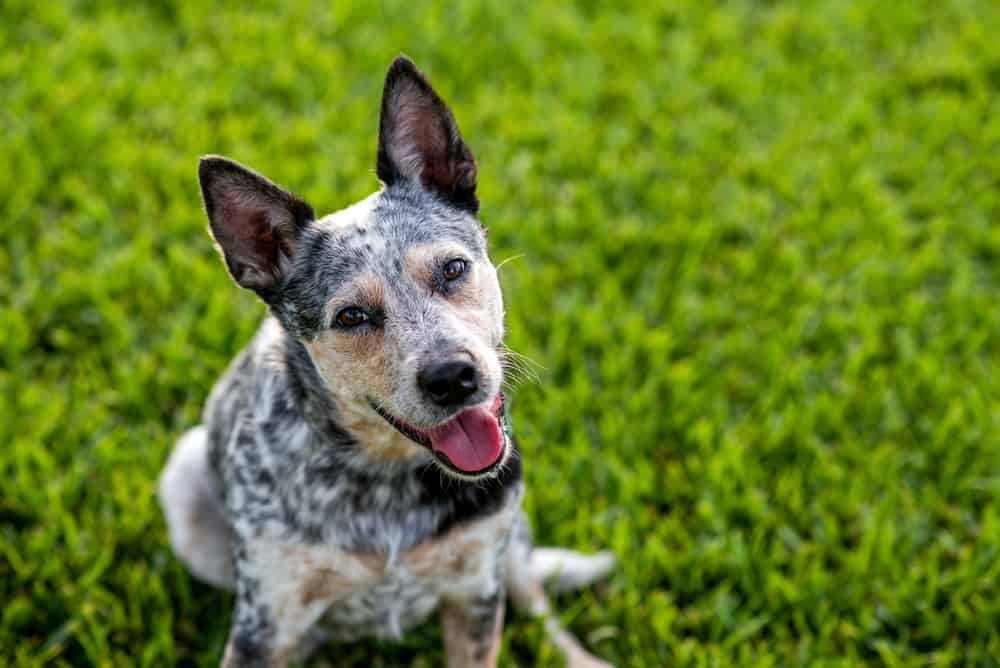Dogs are excellent pets and bring something special to a family. But adding a furry friend to the family is a big step, and parents need to learn about the dog breed they are considering before bringing the dog into the home. Dogs can be amazing companions, and children raised with dogs are a step ahead in life skills. According to the American Kennel Club, children raised with dogs have higher self-esteem, less stress, and better cognitive skills. Essentially, having a dog gives them a healthy, happy childhood.
But not all dogs are good with kids. Blue heelers are great dogs and loyal companions but are not the best choice for families with small children.
What Are Blue Heelers?
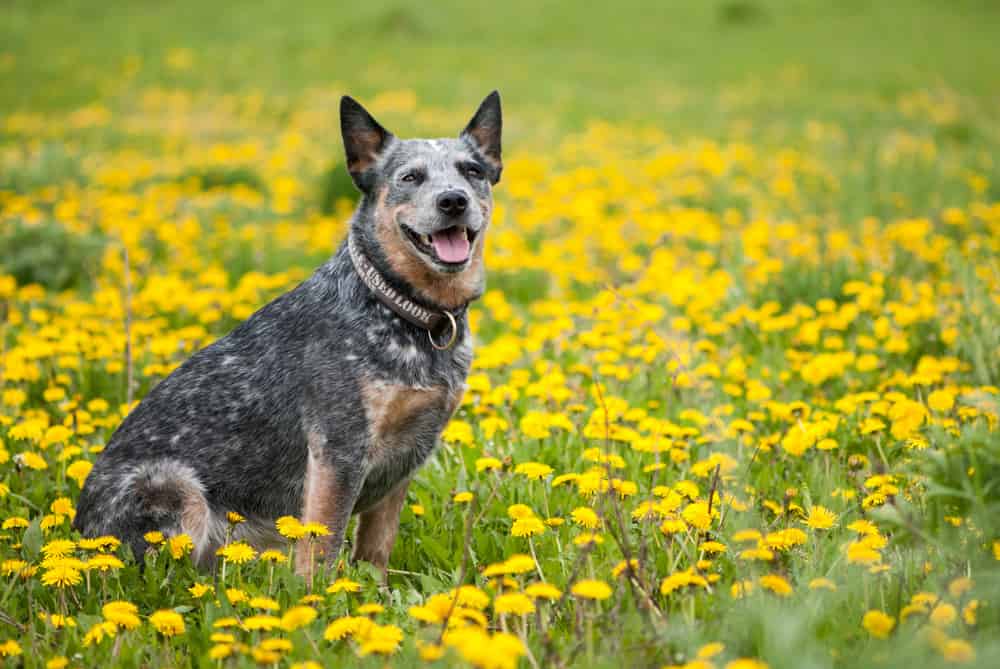
Blue heelers are loyal companions.
©Iryna Dobrovynska/Shutterstock.com
Blue heelers are also known as Australian Cattle Dogs. These intelligent dogs are medium-sized dogs developed for herding cattle. Blue heelers were created in Australia by breeding dogs from the UK with Australian native dogs called dingos for the cattle ranching industry in the mid-nineteenth century. The American Kennel Club recognized the breed officially in 1980.
- The must-have convenient reference guide for every home cook!
- Includes more than 8,000 substitutions for ingredients, cookware, and techniques.
- Save time and money on by avoiding trips to grab that "missing" ingredient you don't really need.
Blue heelers have a unique look with a mix of colors and brown and black and grayish-mottled spots that, from a distance, appear slightly blue. There are also red heelers, which have a similar look but with reddish tones rather than gray. These herding dogs are hearty and independent and need a lot of space and exercise.
While they make good companions and are incredibly loyal dogs, there are a few things to consider before bringing one home to your family.
Key Characteristics of Blue Heelers
- Intelligent
- Energetic
- Cautious and alert
- Protective
Things to Consider Before Bringing a Blue Heeler Home
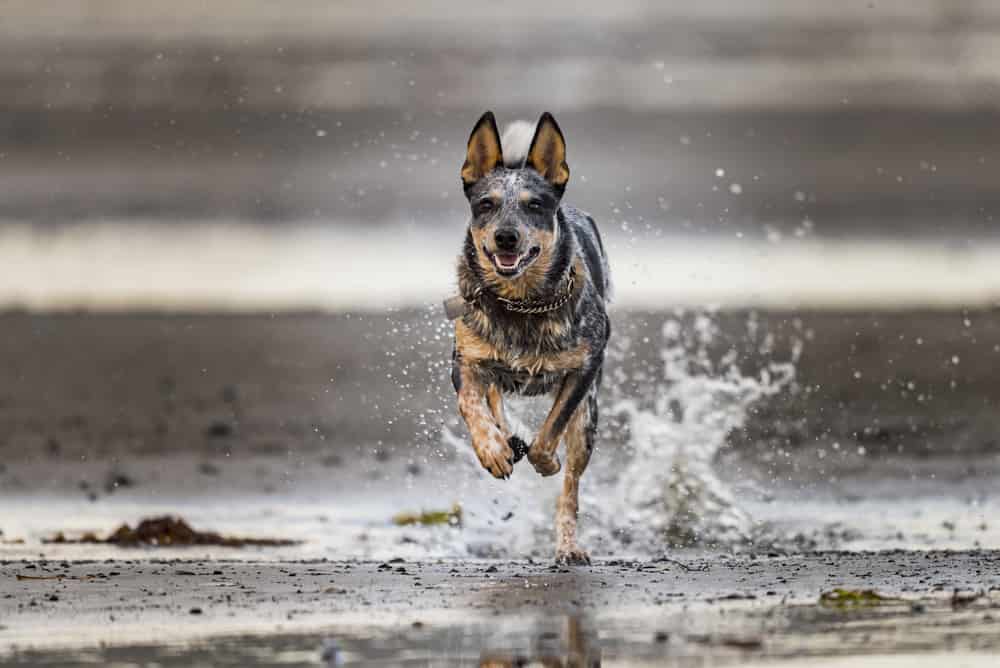
Blue heelers are energetic, active dogs.
©BGSmith/Shutterstock.com
Blue heelers are intelligent dogs, which makes them easier to train. But they are also independent and need a dominant owner. Some suggest that blue heelers are not ideal for first-time dog owners that may not have experience setting boundaries with their canines. These dogs are extremely loyal and do not rehome easily. Bringing a blue heeler into the family is a lifelong commitment.
Due to their breeding, blue heelers need exercise and space. This is not the type of dog that can live in an apartment and handle one daily walk. This breed needs a couple of hours of exercise every day. While blue heelers usually have a good temperament, if they don’t get enough exercise or become bored from lack of socialization and stimulation, they can have behavior issues that can result in a lot of chewed-up things around the house.
Since blue heelers were initially bred to be herding dogs, they have a domineering personality and can nip at children or other pets. When they are properly trained, they can lose some of that attitude and be around others safely. But again, this comes down to training and ensuring that the dog understands the pecking order in the family.
If anyone in the home suffers from allergies, then another breed may be a better fit. Blue heelers are not hypoallergenic and can exacerbate allergies in children and adults.
Are Blue Heelers Good Family Dogs?
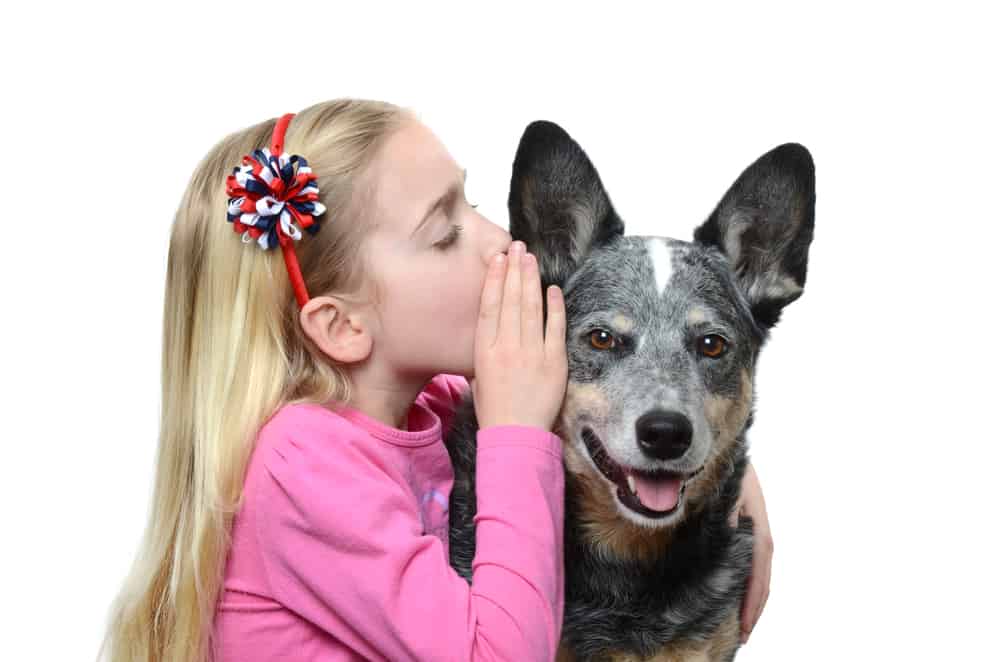
Well-trained blue heelers are good with kids.
©Kim Reinick/Shutterstock.com
Yes and no. The short answer is yes; they can be good family dogs with proper training and the right environment. If the dog is trained, it can build a relationship and be a good family dog that will play and protect. Ideally, training and socialization should start earlier. These intelligent dogs are known to push boundaries and need training and structure. They will follow the rules and correct bad behavior if they have a firm trainer.
Blue heelers are best for older children rather than younger ones. Blue heelers can easily become agitated at sudden movements or rambunctious behavior, for example, toddlers' behavior. When they become agitated, they can nip and bite. Plus, younger children are prone to crying, yelling, and tantrums which can also put blue heelers on alert. In addition, young children cannot understand cues that the dog is agitated and can push the dog to more extreme behavior.
Children over 10 years old are better suited to have a blue heeler as the family dog because they can understand the dog’s body language and cues that it is uncomfortable before they strike. And since blue heelers have so much energy, older kids can better handle that rowdy dog behavior. Younger children may get knocked down, and the rough play that blue heelers need to thrive is difficult for small children to navigate.
- The must-have convenient reference guide for every home cook!
- Includes more than 8,000 substitutions for ingredients, cookware, and techniques.
- Save time and money on by avoiding trips to grab that "missing" ingredient you don't really need.
As a family dog, blue heelers can be protective and cautious. They are always on high alert, and once they have bonded with the family and understand who the owner is, they can become excellent guard dogs and playmates.
Temperament and Maintenance

Blue heelers are active and playful.
©Vera Reva/Shutterstock.com
Blue heelers, unlike other breeds, take time to warm up to new people. Part of that is due to their protective and cautious nature. While they may have warmed up to their own family and the children in their household, new people, especially new children, can be upsetting and confusing for them. Pet parents of blue heelers should be cautious of the dog around any new people, as they can be unpredictable. And as a general rule, never leave unfamiliar children alone with the dog.
Blue heelers are medium-sized dogs that can weigh anywhere from 35 to 49 pounds and, if properly cared for, can live between 12 and 16 years. They don't usually need any special grooming beyond regular nail clipping, teeth brushing, and bathing. In the spring, blue heelers shed excessively and will need some brushing to maintain their coat.
Blue heelers are active dogs that don't need a special diet beyond good quality dog food. Choose high-quality, calorically dense dog food to sustain their active and energetic lifestyle. Their Australian breeding makes them hardy dogs that can handle winter and summer equally well. But they will need an outdoor shelter if they live in an extremely cold climate.
Age and History
If you are considering getting a rescue blue heeler, it is crucial to know as much as possible about the dog's history. Rescue dogs are notoriously unpredictable, and while that may be okay for adults if you have children at home, you will need to train the dog and be aware of any negative behavior patterns.
Ideally, a younger dog will be easier to train. However, they have even more energy, and it will take time. If the rescue is an older dog that was previously trained, it should adapt to a new family.
Preparing Your Blue Heeler for a Baby
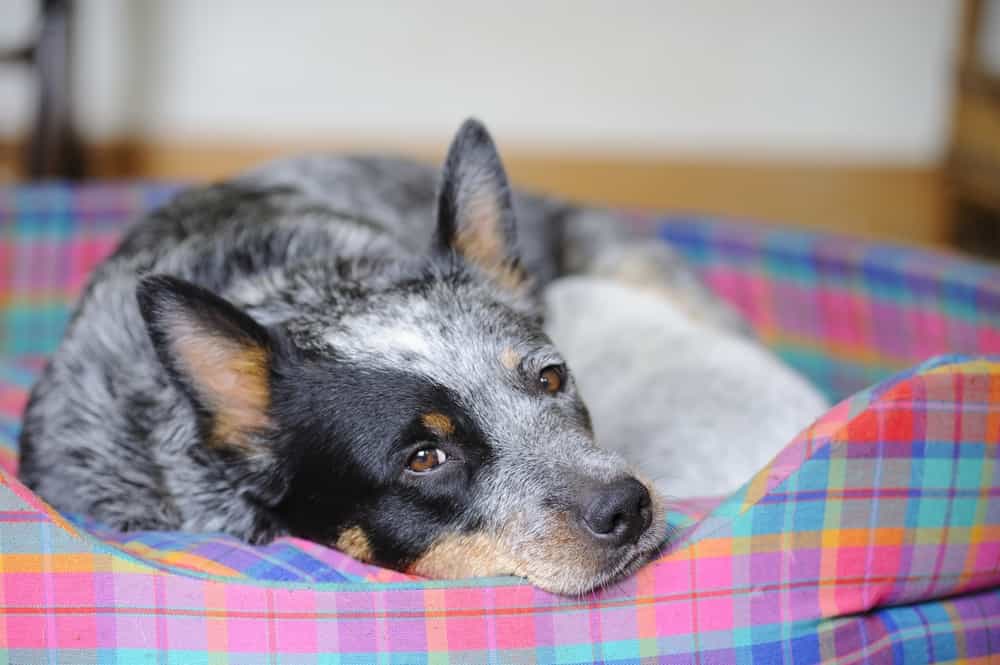
Blue heelers need to be supervised around young children.
©WOLF AVNI/Shutterstock.com
If you already have a blue heeler and are expecting a baby, you must be cautious when bringing the new baby home. Blue heelers can get jealous and may demonstrate aggressive behavior toward the infant.
Veterinarians suggest bringing home an item the baby has touched, such as a burp cloth or cap. Let the dog smell it and become familiar with the baby’s smell before bringing the baby home. In addition, the dog must learn that the baby’s nursery is off-limits.
When introducing the baby and the dog, the dog must understand and respect the baby. The initial introduction should be short and at a distance. Gradually, the dog can come closer to the baby over time, but it must learn to respect the baby as another pack leader.
Experts agree that the key to a positive relationship between the baby and the dog is to create firm boundaries while not disrupting the dog's routine too much. Pet parents must ensure that their blue heelers get plenty of exercise and attention, or it may result in a negative association between the new baby and their lack of exercise.
Pros of Blue Heelers as a Family Dog
- Smart and easy to train
- Protective
- Loyal
- Energetic and playful
Cons of Blue Heelers as a Family Dog
- Aggressive to new people
- Nips and bites
- Easily agitated
Overall a blue heeler makes a good family dog, especially for kids older than 10. But they are a lifetime commitment and require training and an owner with strong leadership skills.
- The must-have convenient reference guide for every home cook!
- Includes more than 8,000 substitutions for ingredients, cookware, and techniques.
- Save time and money on by avoiding trips to grab that "missing" ingredient you don't really need.
The image featured at the top of this post is ©Tanya Consaul Photography/Shutterstock.com
